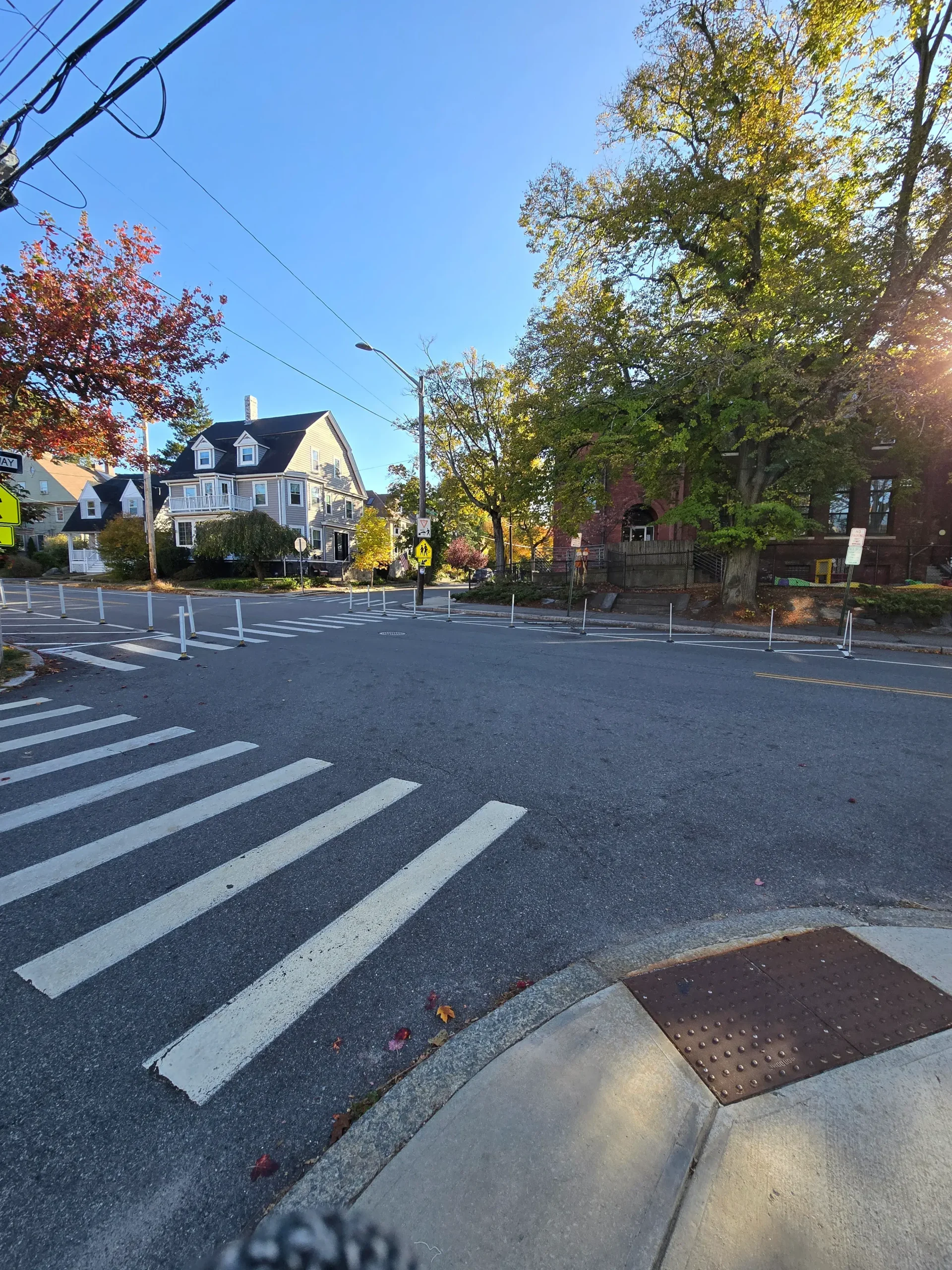The popular Hope Street on Providence’s east side and its surrounding area have been getting several street upgrades over the past few months. These have been pushed by councilwoman Sue Anderbois, stating she’s received multiple complaints over time about reckless driving and inaccessibility. Improvements include adding speed bumps, converting streets to one-way, and, most recently, installing crosswalk bollards in front of Hope’s prominent YMCA.
“The most frequent requests I receive are for safety measures on our streets and sidewalks… We had frequent reports of families attending daycare nearly being hit while using the [YMCA] crosswalk.”
– part of an email dated October 14, 2024, from Anderbois
One significant contribution to these factors is the state of North Main Street, which has risen in notoriety. Drivers disregard pedestrians and vulnerable road users, treating the 25 mph street like a highway. This effect ripples to surrounding streets, including Hope, where drivers continue their behavior, using the residential streets as pseudo on and off-ramps for North Main.
Historically, this has been the state of the east side for some time—even Anderbois’s first statement alludes to it. In response, two years ago, local organizations and community members decided to clamp down, initiating a temporary trial bike trail on Hope to alleviate the mayhem to great success.
People, including children and families, could now safely ride their bikes and scooters and walk to the nearby schools. Not just that, drivers slowed down, and it connected Brown University to the east side community, invigorated business, and overall made the street more accessible to everyone.
Unfortunately, it was short-lived. Despite evidence to the contrary, a few powerful local businesses opposed it, claiming it would reduce parking, increase traffic, and wouldn’t be used. In conjunction with the newly elected mayor—who already opposed Providence’s bike lanes—the plan was scrapped. Hope Street and the surrounding vital areas would remain disconnected and inaccessible.
While these new additions to the east side aren’t as “radical” as bike lanes, they have similar effects by reducing the parking that opponents have staunchly vouched for. In addition, cars have been forced to slow down, potentially increasing congestion. All of this is because so many residents, in fact, walk and bike.
It should be no surprise if these same opponents come out in opposition once again. On the same token, if they react favorably, the question must be asked: why weren’t they supportive of the project that initially remedied these safety problems, the bike trail?
As long as Anderbois, community members, and experts continue to push, the east side can be fixed. With these incremental measures, a bike lane and other adjustments may face less opposition in the future. However, as long as some lawmakers recognize the select few businesses’ opinions over everything else, the war for greater safety, accessibility, and community will be long fought.
